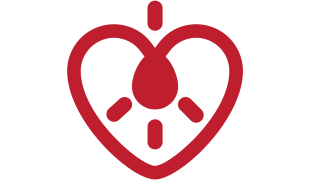- 15325
- 591
- 48
- 41
- 1
- Help Ukraine
About the solution
Because Lewis’ grandmother suffers from dementia, she was hospitalized for severe dehydration. People with dementia may suffer from dehydration because they forget to drink or they might not feel thirsty or, in severe cases, they may forget how to drink. Usually, when dementia patients are subject to dehydration, caregivers need to step in, proving them with the necessary amount of liquids through food and beverages.
When Lewis discovered his grandmother was not drinking enough, he had the idea to create an easier way for her to get her fluids. After consultation with doctors, psychologists and experiencing the life in a dementia care home, he came up with the idea of the Jelly Drops. The Jelly Drops are coloured bite-sized balls of liquid which are easy to swallow. They are composed of 90% of water, and 10% of gelling agents and electrolytes, to foster hydration.
The drops are designed as candies, to be tempting for dementia patients. “When first offered, grandma ate 7 Jelly Drops in 10 minutes, the equivalent to a cup full of water, something that would usually take hours and require much more assistance.”
Even the packaging was produced to meet the needs of dementia patients, who struggle to plan and execute actions in sequence. The transparent lid allows to easily find the drops and a locking hinge allows to have free a hand to grab the drops.
At the moment, some care homes in the UK are trying the Jelly Drops, but Lewis aims at doing more research and start production. He won several awards including the Dyson School of Design Engineering DESIRE Award for Social Impact.
Adapted from: https://blog.thealzheimerssite.greatergood.com/jelly-drops/
More information: https://www.jellydrops.co.uk/
这些解决方案不应包括使用药物,化学品或生物制品(包括食品);创伤性设备;冒犯性的,商业或内在危险的内容。该解决方案未经医学验证。请谨慎进行!如果您有任何疑问,请咨询健康专家。
DISCLAIMER: This story was written by someone who is not the author of the solution, therefore please be advised that, although it was written with the utmost respect for the innovation and the innovator, there can be some incorrect statements. If you find any errors please contact the patient Innovation team via info@patient-innovation.com
-
-
337
-
1
-
5235

Avoid skin wounds
(SELF)-CARE: EATING: Eating independently.
(SELF)-CARE: DRINKING: Drinking independently.
CAREGIVING
Alzheimer's Disease
Gestational Diabetes
diabetes type 2
diabetes type 1
Strategy/Tip
Memory loss
Confusion
Anxiety
Mood swings
Sensory disturbances (e.g., hypersensitivity to touch, temperature changes)
Changes in skin texture
Enhancing health literacy
Promoting self-management
Managing diabetes
Preserving Organ Function
Managing Neurological Disorders
Restoring Skin Health
Preventing (Vaccination, Protection, Falls, Research/Mapping)
Raise awareness
Caregiving Support
Endocrinology
General and Family Medicine
Neurology
Portugal
-
-
-
545
-
0
-
8918

Man creates device to help to put on socks, shoes and even trousers
Grip
(SELF)-CARE: DRESSING: Dressing independently.
BODY BALANCE: Maintaining body balance
STANDING UP: Standing up from a seated position
Knee Deformity
Assistive Daily Life Device (to help ADL)
Strategy/Tip
Muscle weakness
Limited range of motion
Muscle pain or stiffness
Reduced grip force (grip)
Loss of muscle coordination
Muscle cramps or spasms
Joint deformity
Joint redness or warmth
Swelling or inflammation
Difficulty bearing weight
Muscle twitching
Difficulty standing from a seated position
Difficulty getting up from the floor
Numbness or tingling in the extremities
Joint pain or swelling
Restoring mobility
Promoting self-management
Preserving Organ Function
Rehabilitating After Stroke
Managing Neurological Disorders
Recovering from Traumatic Injuries
Maintaining Balance and Mobility
Preventing (Vaccination, Protection, Falls, Research/Mapping)
Caregiving Support
Internal Medicine
Neurology
Orthopedics
Physical Medicine and Rehabilitation
Rheumatology
Sports Medicine
Vascular Surgery
United States
-
-
-
452
-
3
-
7577

Using the Wii-Fit to keep the active patient
CAREGIVING
BODY BALANCE: Maintaining body balance
WALKING: Walking
STANDING UP: Standing up from a seated position
Parkinson's Disease
Strategy/Tip
Muscle cramps or spasms
Difficulty coordinating movements
Muscle weakness
Twitching or involuntary movements (myoclonus)
Fatigue
Restoring mobility
Managing Neurological Disorders
To improve Treatment/Therapy
Preventing (Vaccination, Protection, Falls, Research/Mapping)
Raise awareness
Caregiving Support
General and Family Medicine
Internal Medicine
Neurology
Physical Medicine and Rehabilitation
Portugal
-
 zh
zh
Hamilton Lindley • Tue, 01/28/2020 - 22:30